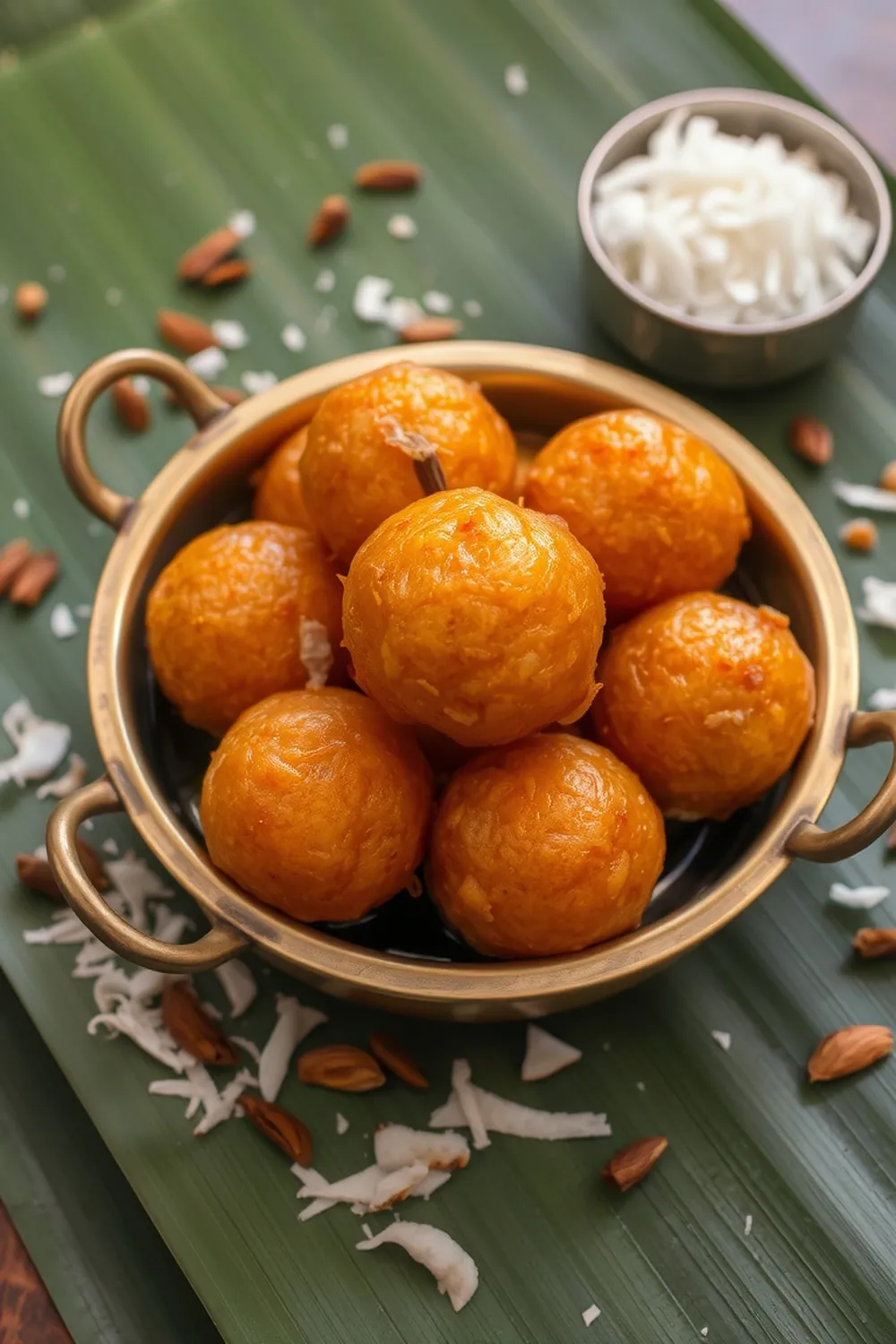- Rinse the raw rice thoroughly and set aside.
- In a pressure cooker, combine milk, water, and a pinch of salt. Add the rinsed rice.
- Cook on medium heat for one whistle, then turn off the flame.
- Once the pressure releases naturally, open the cooker and mash the pongal until creamy.
- Serve hot with jaggery, banana slices, and a drizzle of ghee.
- Calories:320 kcal25%
- Energy:1338 kJ22%
- Protein:8 g28%
- Carbohydrates:55 mg40%
- Sugar:15 mg8%
- Salt:150 g25%
- Fat:8 g20%
Last Updated on 2 months by Neha Deshmukh
Authentic Pongal Recipe – South Indian Rice & Milk Delight
Hey everyone! Pongal is one of those dishes that just feels like home. It’s simple, comforting, and packed with flavour. I remember the first time I made this – it was for Makar Sankranti, and honestly, I was a little nervous! But the aroma filling the kitchen, and the happy faces around the table… it was totally worth it. Today, I’m sharing my family’s recipe for authentic Pongal, a South Indian rice and milk delight, with you. Let’s get cooking!
Why You’ll Love This Recipe
This Pongal recipe is more than just a breakfast dish; it’s a celebration! It’s incredibly easy to make, needing just a handful of ingredients and about 20 minutes. The creamy texture and subtle sweetness are just divine. Plus, it’s a wonderfully comforting meal, perfect for a chilly morning or a festive occasion. You’ll love how quickly it comes together and how satisfying it is.
Ingredients
Here’s what you’ll need to make this delicious Pongal:
- ½ cup raw rice (about 100g)
- 1 cup milk (240ml)
- 2 cups water (480ml)
- A pinch of salt
Ingredient Notes
Let’s talk ingredients! Getting these right makes all the difference.
- Rice: Traditionally, ponni rice is used for Pongal. It’s a short-grain rice that gets beautifully creamy when cooked. If you can’t find ponni rice, any short-grain rice will work, but adjust the water slightly if needed.
- Milk: Full-fat milk gives the richest flavour, but you can use any kind you prefer. In some South Indian households, coconut milk is also used for an extra layer of flavour!
- Ghee: Ghee is essential! It adds a beautiful aroma and flavour. It’s also considered auspicious and is traditionally offered to the Sun God during Pongal. A little goes a long way, so don’t skimp!
- Salt: Just a pinch balances the sweetness.
Step-By-Step Instructions
Alright, let’s make some Pongal!
- First, give the raw rice a really good rinse under cold water. This gets rid of excess starch and helps create that perfect creamy texture. Keep rinsing until the water runs clear, then set it aside to drain.
- Now, in a pressure cooker, combine the milk, water, and that pinch of salt. Add the rinsed rice to the mixture.
- Close the lid of the pressure cooker and cook on low heat for one whistle. Once you hear the whistle, immediately turn off the flame.
- Let the pressure release naturally. Don’t try to force it open! Once the pressure is fully released, carefully open the cooker.
- Using a potato masher or the back of a spoon, gently mash the pongal until it reaches a creamy consistency. You can leave a little texture if you like – it’s up to you!
- Serve immediately while it’s hot.
Expert Tips
Here are a few things I’ve learned over the years:
- Don’t overcook the rice! You want it soft, but not mushy.
- If you’re not using a pressure cooker, you can cook the pongal in a pot on the stovetop. It will take longer (around 20-25 minutes) and you’ll need to stir frequently to prevent sticking.
- For extra flavour, you can temper some mustard seeds, urad dal (split black lentils), and cashews in ghee and pour it over the pongal before serving.
Variations
Pongal is pretty versatile! Here are a few ways to switch things up:
- Vegan Pongal Adaptation: Simply substitute the dairy milk with your favourite plant-based milk like almond or soy milk.
- Gluten-Free Confirmation: This recipe is naturally gluten-free!
- Spice Level – Mild: Pongal is traditionally mildly spiced. You can add a tiny pinch of black pepper for a subtle warmth.
- Pongal for Makar Sankranti/Thai Pongal: This is the traditional way to enjoy Pongal! It’s often offered to the Sun God as a symbol of gratitude for a bountiful harvest.
Serving Suggestions
Traditionally, Pongal is served hot with a piece of jaggery (unrefined cane sugar), banana slices, and a generous drizzle of ghee. My grandmother always said the banana represents prosperity! It’s also lovely with a side of sambar or chutney.
Storage Instructions
Pongal is best enjoyed fresh. However, if you have leftovers, you can store them in an airtight container in the refrigerator for up to 2 days. Reheat gently on the stovetop or in the microwave, adding a splash of milk or water to restore the creamy texture.
FAQs
Got questions? I’ve got answers!
- What type of rice is best for Pongal? Ponni rice is the traditional choice, but any short-grain rice will work.
- Can I make Pongal without a pressure cooker? Yes, you can! It will just take longer to cook on the stovetop.
- What is the significance of offering Pongal to the Sun God? Pongal is a harvest festival, and the Sun God is worshipped for providing energy and a good harvest.
- Can I add vegetables to Pongal? Absolutely! Some people like to add peas, carrots, or other vegetables for extra nutrition and flavour.
- How do I adjust the sweetness of Pongal? Adjust the amount of jaggery you add to suit your taste. You can also use sugar as a substitute.










